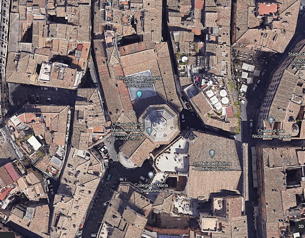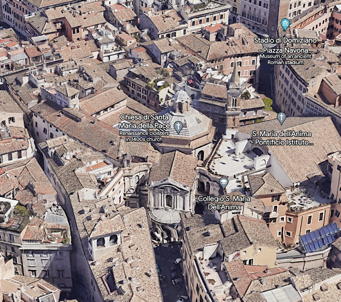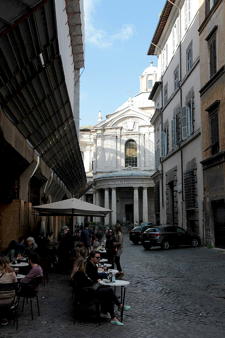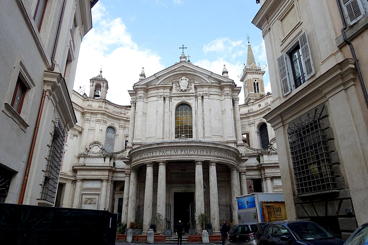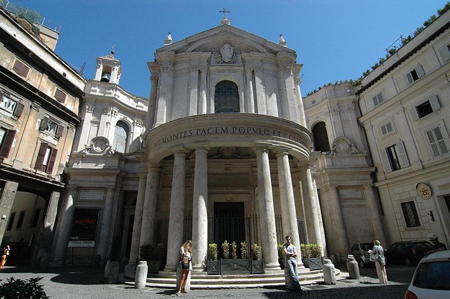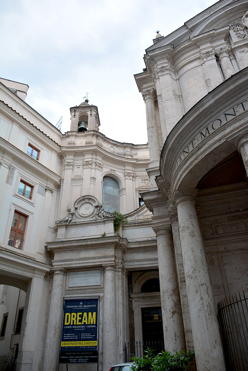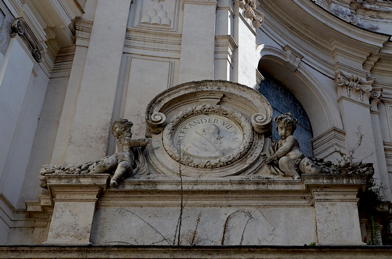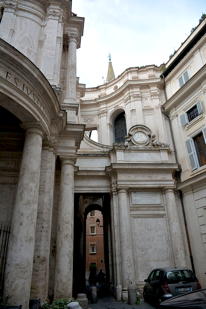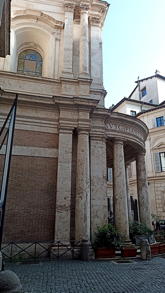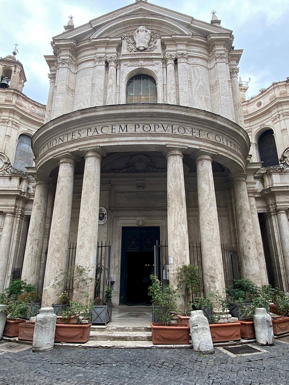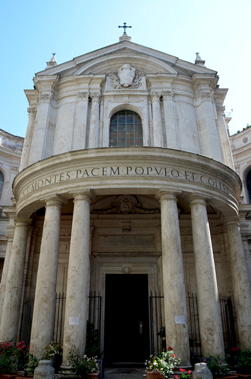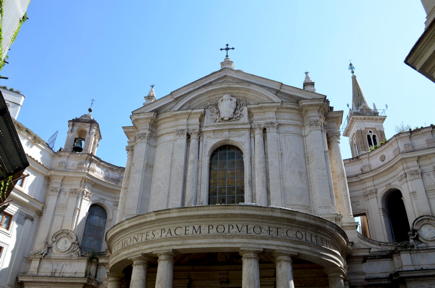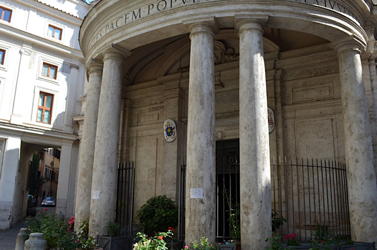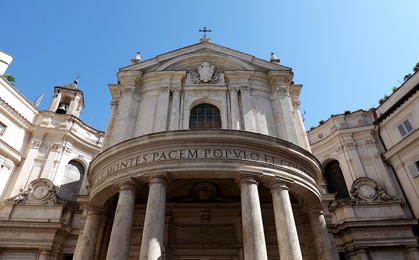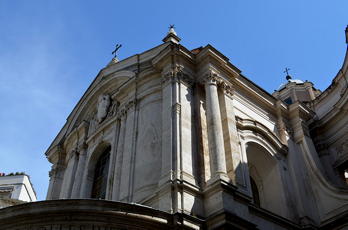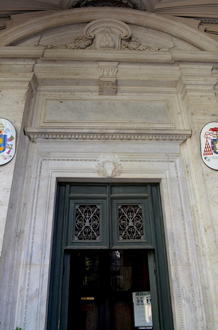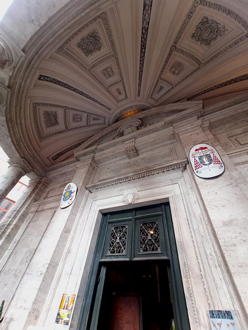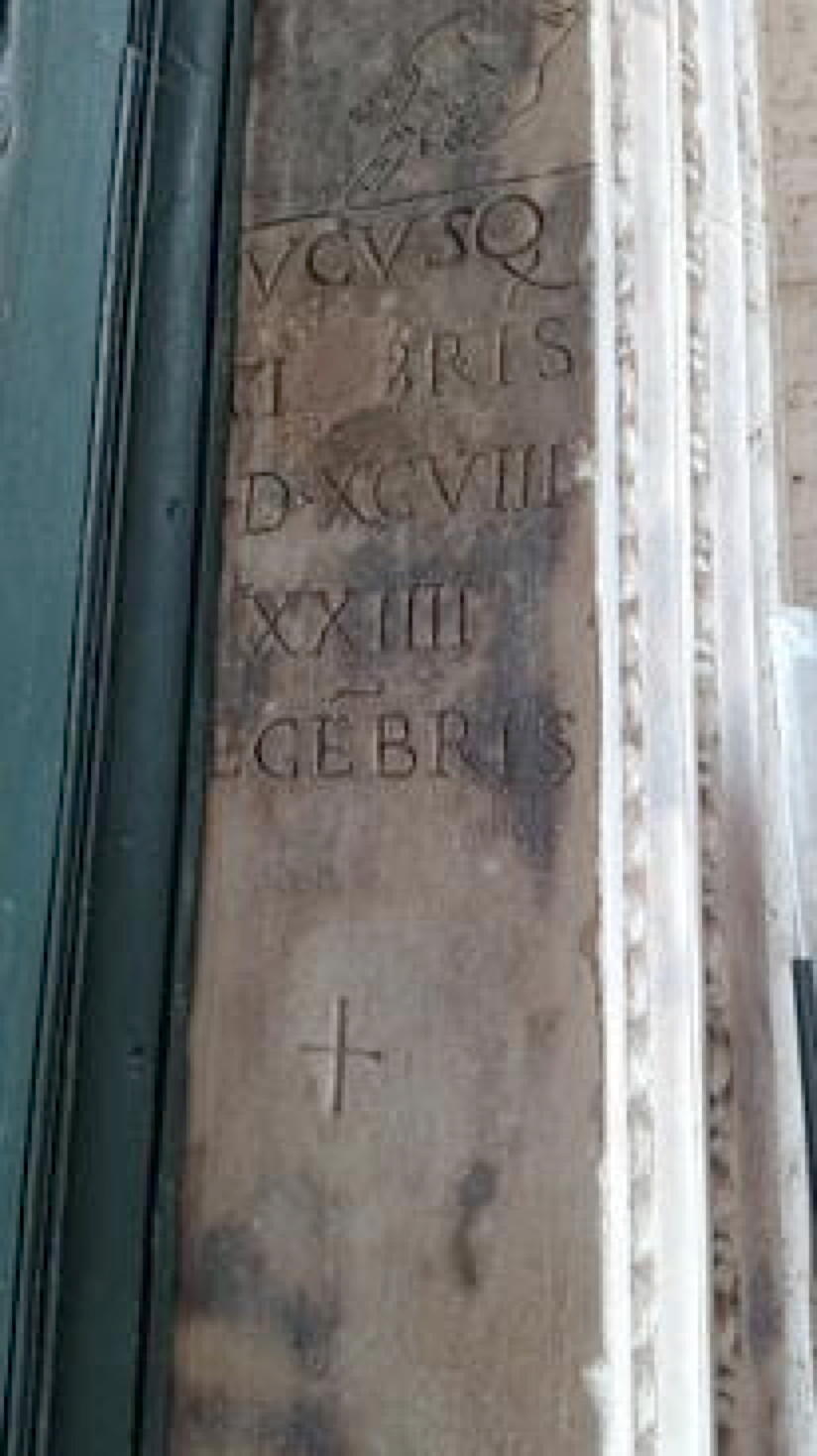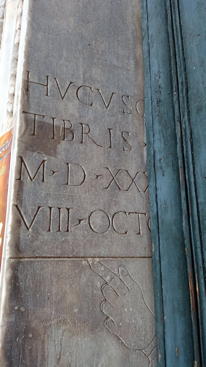Santa Maria della Pace, a jewel of the Roman Baroque, is a 15th century titular church in Rome in the Ponte (V) district near Piazza Navona, dedicated to the Blessed Virgin Mary, under her title of "Our Lady of Peace".
For reference, a plan of the church is available
here.
The first church here, documented since 1186, was the church of the aquarellari, the water-salesmen who provided casks of water from the Tiber to parts of Rome that had no direct water supply. The current building was built on the foundations of the pre-existing church of Sant'Andrea de Aquarizariis in 1482.
The present church was built by
Pope Sixtus IV della Rovere, with construction starting in 1482, after he had made a vow to build a new church here if peace was restored between the Papal States and Florence, Milan and Naples following the
Pazzi conspiracy and was brought to an end in December 1480. The client and financier of the work was Cardinal Oliviero Carafa (1430 - 1511), archbishop of Naples, as evidenced by the numerous inscriptions placed on the building, while the project was probably entrusted to the architect
Baccio Pontelli.
The church was rededicated to the Virgin Mary to remember a miracle in 1480. The legend is that a drunken soldier lost a large sum of money gambling in the street outside a drinking establishment next to the church, and in fury threw a knife at an icon of Our Lady which was on the wall nearby. It struck her in the breast and the wound started to bleed.
The church was renovated under the pontificate of
Pope Alexander VII, of the Chigi family (1655-1667). With the intention of making the church more usable by freeing it from the narrow medieval streets that suffocated it, he proposed the creation of a small square.
Pietro da Cortona was the architect in charge of reorganizing the urban space and putting a new façade before the pre-existing 15th century one. Cortona solved the problem of the façade with the invention of a pronaos articulated by free columns.
A full restoration was accomplished recently and this was completed in 2010. In parallel, the cloister was also restored and is now an arts exhibition center. A custom arose that newly-weds should make a pilgrimage here the day after their wedding in order to entreat the Blessed Virgin for a peaceful married life.
